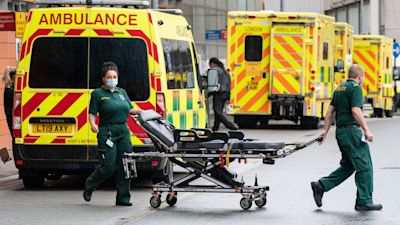Woman in Cambridge diagnosed with deadly Crimean-Congo haemorrhagic fever

A woman has been diagnosed in the UK with Crimean-Congo haemorrhagic fever after a trip to Central Asia, the UK Health Security Agency (UKHSA) said.
Crimean-Congo haemorrhagic fever is a viral disease usually transmitted by ticks and livestock animals in countries where the disease is endemic, and can lead to fatal organ damage in humans.
The woman was diagnosed at Cambridge University Hospitals NHS Foundation Trust and is receiving specialist care at the Royal Free Hospital in London.
It is the third known case of the fever in the UK, with prior cases reported in 2012 and 2014, both of which did not spread.
According to the World Health Organisation, around 30% of patients die, usually in the second week of infection. Severely ill patients may experience rapid kidney deterioration, sudden liver failure or lung failure after the fifth day of illness.
In patients who recover, improvement generally begins on the ninth or 10th day after the onset of illness.
As well as being transmitted by ticks, it can also be contracted through contact with animal tissue where the virus has entered the bloodstream, during and immediately after the slaughter of animals.
Dr Susan Hopkins, chief medical adviser at the UKHSA, said the virus "does not spread easily between people and the overall risk to the public is very low".
She said the agency was working to contact people who have been in close contact with the woman to assess them and provide advice.
Dr Hopkins added: "UKHSA and the NHS have well-established and robust infection control procedures for dealing with cases of imported infectious disease and these will be strictly followed."
Dr Sir Michael Jacobs, consultant in infectious diseases at the Royal Free London, said: “The Royal Free Hospital is a specialist centre for treating patients with viral infections such as Crimean-Congo haemorrhagic fever.
“Our high-level isolation unit is run by an expert team of doctors, nurses, therapists and laboratory staff and is designed to ensure we can safely treat patients with these kind of infections.”
What are the symptoms of Crimean-Congo haemorrhagic fever?
Symptoms of the virus come on suddenly and include fever, muscle ache, dizziness, neck pain and stiffness, backache, headache, sore eyes and sensitivity to light.
People can also suffer nausea, vomiting, diarrhoea, abdominal pain and a sore throat early on, followed by sharp mood swings and confusion.
Other signs include rash in the mouth and throat, fast heart rate and enlarged lymph nodes.
Where does it originate?
It was first diagnosed in the Crimea in 1944 and given the name Crimean haemorrhagic fever, according to the WHO.
In 1969 it was recognised that the pathogen behind it was also responsible for an illness identified in the Congo in 1956.
As a result, both places names were included in the current name for the disease and virus.
What do we know about the fever?
According to the WHO, the Crimean-Congo haemorrhagic fever (CCHF) virus causes severe viral haemorrhagic fever outbreaks.
CCHF outbreaks have a case fatality rate of up to 40%.
The virus is primarily transmitted to people from ticks and livestock animals. Human-to-human transmission can occur resulting from close contact with the blood, secretions, organs or other bodily fluids of infected persons.
CCHF is endemic in Africa, the Balkans, the Middle East and Asia, in countries south of the 50th parallel north.
There is no vaccine available for either people or animals.